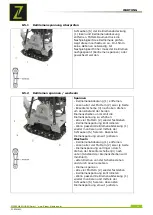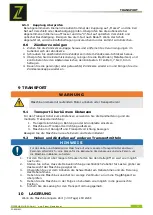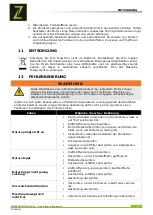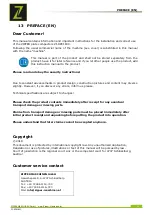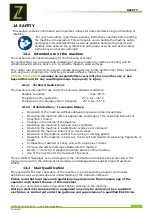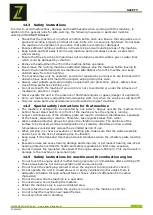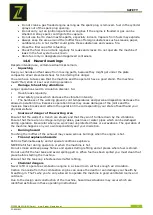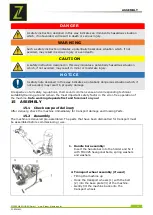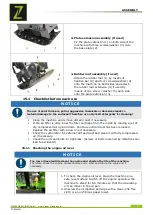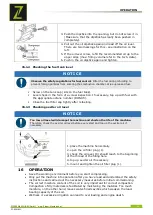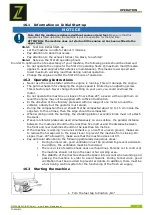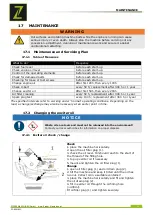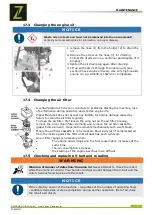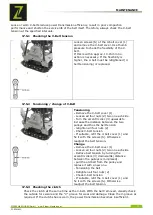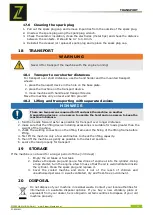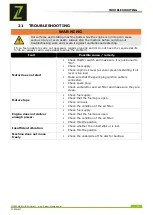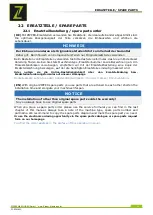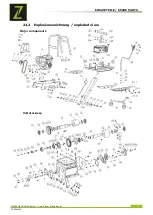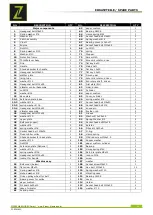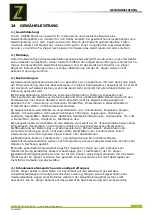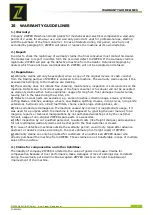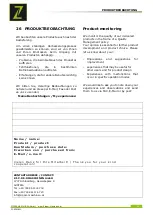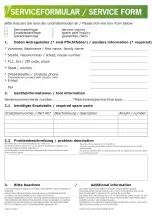
MAINTENANCE
ZIPPER MASCHINEN GmbH www.Zipper-Maschinen.at
33
ZI-RPE160C
Loose or worn V-belts reduce power transmission efficiency, result in poor compaction
performance and shorten the service life of the belt itself. Therefore, always check the V-belt
tension at the specified intervals.
17.5.1
Checking the V-Belt tension
Loosen screws (S) of the V-belt cover (1)
and remove the V-belt cover. Use thumb
pressure to check the flexibility of the V-
belt.
If this is within approx. 10-15mm no
action is necessary. If the flexibility is
higher, the V-belt must be retightened (V-
belt tensioning) or replaced.
17.5.2
Tensioning / change of V-Belt
Tensioning
- Remove the V-belt cover (1).
- Loosen all four nuts (2) two on each side
- Turn the eccentric disc (3) upwards to
increase the distance between the two
pulleys and thus the belt tension.
- retighten all four nuts (2)
- Check V-belt tension
- If suitable, refit the V-belt cover (1) and
fix it with the screws (S). Otherwise
readjust the belt tension.
Change
- Remove the V-belt cover (1).
- Loosen all four nuts (2) two on each side
- Reduce belt tension by turning the
eccentric discs (3) downwards (distance
between the pulleys is minimised).
- pull the old belt from the pulley and
replace it with a new one.
- Tensioning the belt
- Retighten all four nuts (2)
- Check V-belt tension
- If suitable, refit the V-belt cover (1) and
fix it with the screws (S). Otherwise
readjust the belt tension.
17.5.3
Checking the clutch
Check the clutch at the same time as the V-belt. With the belt removed, visually check
the outside for seizure and the "V" groove for wear and damage. Clean the V-groove as
required. If the clutch shoe is worn, the power transmission becomes insufficient.

